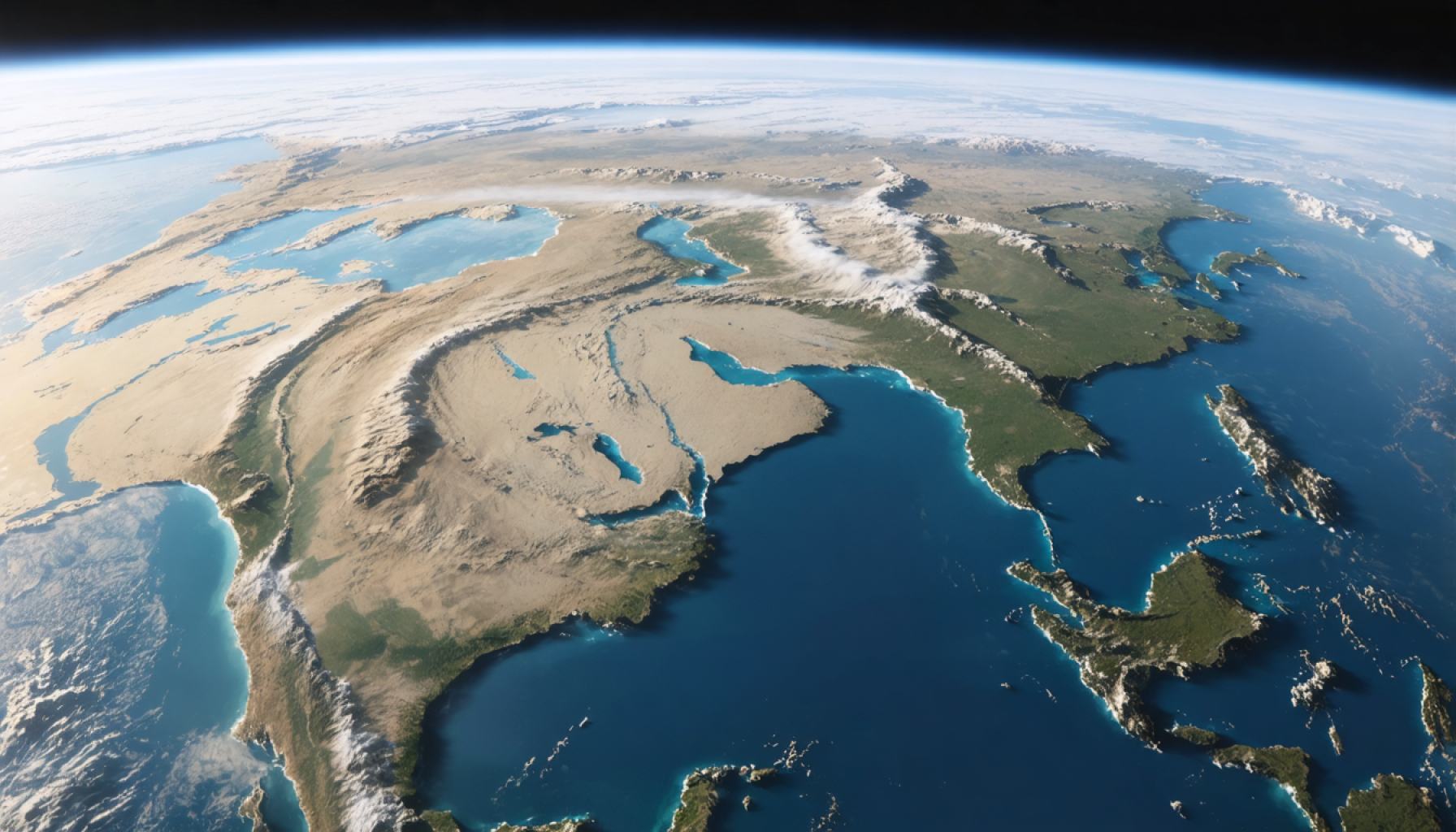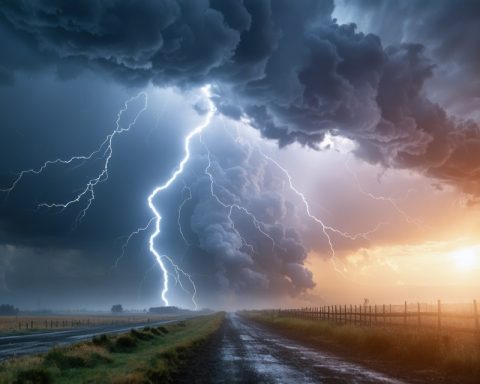- The Fram2 mission marks a groundbreaking achievement in space exploration, orbiting Earth’s polar axes for the first time.
- Spearheaded by Chun Wang, the mission combines scientific research and breathtaking observation.
- The journey draws inspiration from the historic Fram ship expeditions, symbolizing exploration and discovery.
- Crew members Jannicke Mikkelsen, Rabea Rogge, and Eric Phillips conduct over 22 experiments from a unique polar perspective.
- Launching aboard SpaceX’s Resilience capsule, the mission underscores the value of commercial space travel.
- The breathtaking views from orbit challenge perceptions and broaden our geographical knowledge of Earth.
- Scheduled for an 86-hour duration, the mission ends with a daring return maneuver into the Pacific.
- The mission exemplifies humanity’s relentless curiosity and innovation, proving the sky is no longer the limit.
Humanity stands on the cusp of yet another significant milestone as the Fram2 mission unveils an unprecedented chapter in space exploration. Spearheaded by Chun Wang, an intrepid Maltese entrepreneur with roots in cryptocurrency, this mission marks the first time humans have circumnavigated Earth’s polar axes.
On a crisp March evening, the Fram2 crew embarked on their awe-inspiring journey aboard SpaceX’s Resilience capsule. At precisely 9:46 p.m. EDT, the Falcon 9 rocket launched them skyward, escaping Earth’s grasp in a mere ten minutes. From their celestial vantage point, the crew delivers mesmerizing snapshots and videos of our planet, an ethereal blue orb spinning amongst the stars.
The journey emulates the exploratory spirit of the historic polar voyages of yore, drawing inspiration from the legendary Fram ship, which ventured to the extremities of the Earth in the 19th century. These brave adventurers—Jannicke Mikkelsen from Norway, Rabea Rogge from Germany, and Eric Phillips from Australia—are not merely tourists. They’ve embarked with a mission, a blend of scientific pursuits and breathtaking observation, eyes fixed on the Earth’s icy crowns.
This odyssey allows them to conduct over 22 rigorous experiments, probing mysteries only visible from a polar orbit. The endeavor is an intersection of scientific inquiry and digital prowess, further underlining the intrinsic value of commercial space travel.
Through the Resilience’s windows, one might see sprawling ice floes adorning the Arctic like a quilt of diamonds, or catch fleeting glimpses of Antarctica—a vast, silent whiteness, eternal and uncompromising. Such images broadcasted back to Earth challenge perceptions and stretch the boundaries of human geographical knowledge.
The entire mission script, designed for an 86-hour sojourn, prophesies a return to terrestrial soil on April 4. Upon completion, the crew will perform a daring deorbit maneuver, sending the Resilience plunging into the Pacific, sealing this historic escapade.
The Fram2 mission carries vital lessons: our ceaseless curiosity continues to propel us to new stellar heights, bridging technological innovation with the timeless human desire to explore the unknown. As we watch these pioneers orbit the poles, one fact echoes resoundingly—exploration is within our grasp, and the skies are no longer the limit.
Pioneering Polar Orbits: Fram2 Mission’s Breakthrough Discoveries
Exploring the Fram2 Mission: Beyond the Article
The Fram2 mission encapsulates a bold leap in space exploration, spearheaded by the visionary entrepreneur Chun Wang. While the source article aptly captures the mission’s historic landmark of polar circumnavigation, there are additional facets of this mission that deserve attention for their broader implications and potential impact.
Unveiling Additional Insights
1. Scientific Experiments and Objectives
– The Fram2 mission is not just about exploration; it serves as a scientific odyssey. Among the 22 planned experiments, researchers aim to study climate patterns, atmospheric conditions, and investigate ice sheet dynamics from a unique orbital perspective. Such studies enhance our understanding of climate change impacts on polar regions, providing critical data that may inform future environmental policies.
2. Role of Cryptocurrency in Space Exploration
– Chun Wang’s background in cryptocurrency highlights an emerging intersection between digital currencies and space travel. Cryptocurrencies may revolutionize space funding, offering decentralized and transparent financial solutions. This could potentially lower entry barriers and foster a new era of commercial space initiatives.
3. The Evolution of Commercial Space Travel
– The Fram2 mission underscores the increasing role of private enterprises in space exploration. Companies like SpaceX are paving the way for more frequent and attainable access to space, promising a future where space travel may become as routine as air travel for scientific, commercial, and even tourist purposes.
4. Environmental and Sustainability Concerns
– While space exploration yields invaluable insights into Earth’s climate systems, it also raises environmental questions. Rocket launches contribute to atmospheric pollution, and the long-term effects of increased space debris remain a concern. Sustainable practices in space exploration must evolve alongside technological advancements.
Pressing Reader Questions Answered
How-To Steps & Life Hacks for Aspiring Space Explorers:
– Educational Path: Focus on STEM fields, pursuing specializations in astrophysics, engineering, or planetary sciences.
– Networking: Join professional space associations and attend seminars to connect with key industry players.
– Multidisciplinary Skills: Develop complementary skills across languages, technology, and entrepreneurship to broaden opportunities.
Real-World Use Cases of Fram2 Data:
– Data from the Fram2 mission could be vital in predicting polar ice cap dissolution rates and sea level rise scenarios, informing coastal city planning and disaster preparedness strategies.
Controversies & Limitations
– The mission showcases promising technological feats, yet it also raises debates on privacy concerns regarding high-resolution Earth imagery and the ethical dimensions of human occupation of space.
Future Predictions and Market Forecasts
– The introduction of private-space ventures in polar orbit missions hints at a burgeoning market, potentially expanding to include commercial satellite deployments and interplanetary missions.
Actionable Recommendations
1. Educate Yourself: Engage with online courses on space science to stay informed about current advances.
2. Support Eco-Friendly Initiatives: Encourage sustainable practices in space exploration by advocating for environmental protections and space sustainability policies.
3. Stay Informed: Keep up with developments in commercial space travel through reputable sources like Nasa and SpaceX.
The Fram2 mission propels our understanding of the cosmos while charting a course for future innovations. As we advance, taking informed and sustainable steps will be crucial in securing the benefits of space exploration for future generations.














